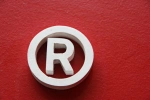Last week we wrote about What Everybody Ought to Know About Trademark Law and this week we will dive deeper to explain how to obtain and protect your rights. We’ll cover how trademark rights stem from use, why common law rights have geographical limitations, how marks are associated with specific goods or services, why only distinctive marks may be protected, and why trademark registrations are encouraged.
1. Common Law Rights Stem From Use
Generally speaking, you must use your mark in commerce before you may seek protection. As an example, say Evan begins marketing his new coffee shop, Evan’s Coffee Shop, in May and opens for business on July 1. His date of first use is July 1 and he can then begin using the ™ symbol.
2. Geographical Limitations
Common law trademark rights are limited to geographical areas. For example, if Evan’s Coffee Shop is in Chicago, he can prevent other coffee shops in Chicago from using the name “Evan’s” with respect to coffee shops. However, his rights don’t extend to San Francisco because his rights are limited to Chicago and nearby areas where he is likely to expand.
3. Goods or Services Limitations
Trademark rights only extend to specific goods and services. In Evan’s case, the operation of a coffee shop is his service. Thus, if another Evan opens Evan’s Auto Shop in Chicago, our friend Evan couldn’t prevent the auto shop from using the name Evan. But, Evan can stop others from using the name “Evan’s” in connection to other coffee shops and perhaps also in connection to similar businesses like bakeries. A good example is Delta, which could mean faucets or an airline. That dual use is allowed because it is unlikely consumers will think their Delta pilot is actually a faucet salesman.
4. Distinctive Requirement
Marks may not be protected unless they are distinctive and capable of identifying a particular source of the good or service. A mark which is arbitrary or suggestive is likely distinctive and can usually receive protection. However, if a mark is descriptive or generic, protection is harder to obtain.
In Evan’s case, his name in relation to the sale of coffee is arbitrary and, assuming there are no other barriers, he can likely protect “Evan’s” in relation to the sale of coffee. However, “coffee shop” is descriptive and generic and, therefore, he cannot protect that portion of his mark.
5. Registration is Encouraged
We mentioned above that common law rights are limited to specific geographic areas. Luckily for Evan, he can obtain nationwide rights with a federal registration with the United States Patent & Trademark Office (he also has the option to register at the state level). Once registered he can use the ® symbol and he will have nationwide protection and also a legal presumption that he owns the mark.
Register Your Mark!
If you want to register your mark be sure to visit MightyMarks.com to learn how we can help you obtain your registration!
Image: Thinkstock/Silvia Antunes
*This article is very general in nature and does not constitute legal advice. Readers with legal questions should consult with an attorney prior to making any legal decisions.









